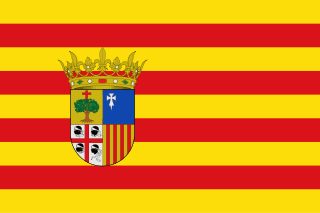
Aragon is an autonomous community in Spain, coextensive with the medieval Kingdom of Aragon. In northeastern Spain, the Aragonese autonomous community comprises three provinces : Huesca, Zaragoza, and Teruel. Its capital is Zaragoza. The current Statute of Autonomy declares Aragon a historic nationality of Spain.

Zaragoza, also called Saragossa in English, is a province of northern Spain, in the central part of the autonomous community of Aragon. Its capital is Zaragoza, which is also the capital of the autonomous community. Other towns in Zaragoza include Calatayud, Borja, La Almunia de Doña Godina, Ejea de los Caballeros and Tarazona.
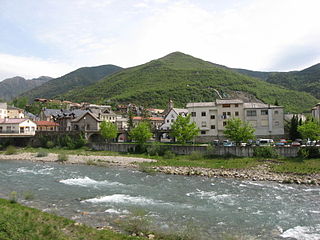
Biescas is a municipality of northeastern Spain close to the border with France, in the midst of the Pyrenees in the province of Huesca. The name seems to provide from the term bizka, which means "hill" in a Proto-Indo-European language.

Hoya de Huesca/Plana de Uesca is a comarca (county) in the province of Huesca (Spain).

Canfranc is a municipality in the Aragón Valley of north-eastern Spain consisting of two villages, the original village and Canfranc Estación, which developed with the establishment of Canfranc International railway station to serve railway traffic across the Pyrenees.

The Tena Valley is a valley located at the southern side of the Pyrenees, in the Alto Gállego comarca, province of Huesca, and is crossed by the Gállego river from north to south. Its main town is Sallent de Gállego.

Ansó is a town and municipality located in the province of Huesca, Aragon, Spain. According to the 2004 census (INE), the municipality had a population of 523 inhabitants. The municipality includes the towns of Ansó and Fago.

Broto is a municipality in the province of Huesca, Aragon, Spain. According to the 2018 census (INE), the municipality has a population of 531 inhabitants.

Gurrea de Gállego is a municipality located in the province of Huesca, Aragon, Spain. According to the 2004 census (INE), the municipality had a population of 1,744 inhabitants.

Sallent de Gállego is a municipality located in the province of Huesca, Aragon, Spain.

La Sotonera is a municipality located in the province of Huesca, Aragon, Spain. It is situated between Huesca and Ayerbe in the Hoya de Huesca. According to 2018 (INE) data, the municipality has a population of 894 inhabitants.
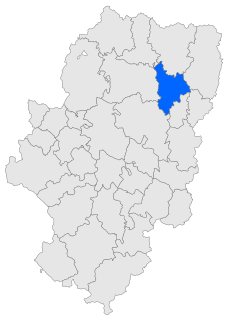
Somontano de Barbastro is a comarca in Province of Huesca, Aragon, Spain.

Alto Gállego is a comarca located in the north of the autonomous community of Aragón, Spain. It occupies practically the entirety of the upper basin of the Río Gállego.
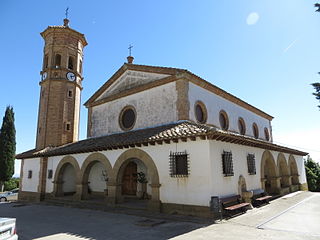
Igriés is a small village located in the Hoya de Huesca, in the province of Aragón in northern Spain.
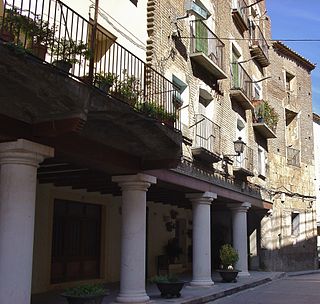
Fonz is a municipality located in the province of Huesca, Aragon, Spain. It had a population of 960 inhabitants in 2014.

La Jacetania is a comarca in northern Aragon, Spain. It is located in the northwestern corner of the Huesca and Zaragoza provinces. The administrative capital is Jaca, with 13,374 inhabitants the largest town of the comarca. The area is famous for its ski resorts.

Plan is a municipality located in the Sobrarbe comarca, province of Huesca, Aragon, Spain. According to the 2010 census the municipality has a population of 336 inhabitants. Its postal code is 22367.

Allué is a village under the local government of the municipality of Sabiñánigo, Alto Gállego, Huesca, Aragon, Spain. There is a Romanesque church from the 12th Century, nature trails leading into the Sierra de San Juan and views of the Spanish Pyrenees. There is a Casa Rural Guesthouse called Casa Vera, which also serves as a yoga and meditation retreat centre.

Orna de Gállego is a village under the local government of the municipality of Sabiñánigo, Alto Gállego, Huesca, Aragon, Spain.
Bolea is a village in the La Sotonera municipality, situated in the province of Huesca in Aragon, Spain. It is located in the Hoya de Huesca area, between the city of Huesca and the town of Ayerbe and close to the river Sotón.

























